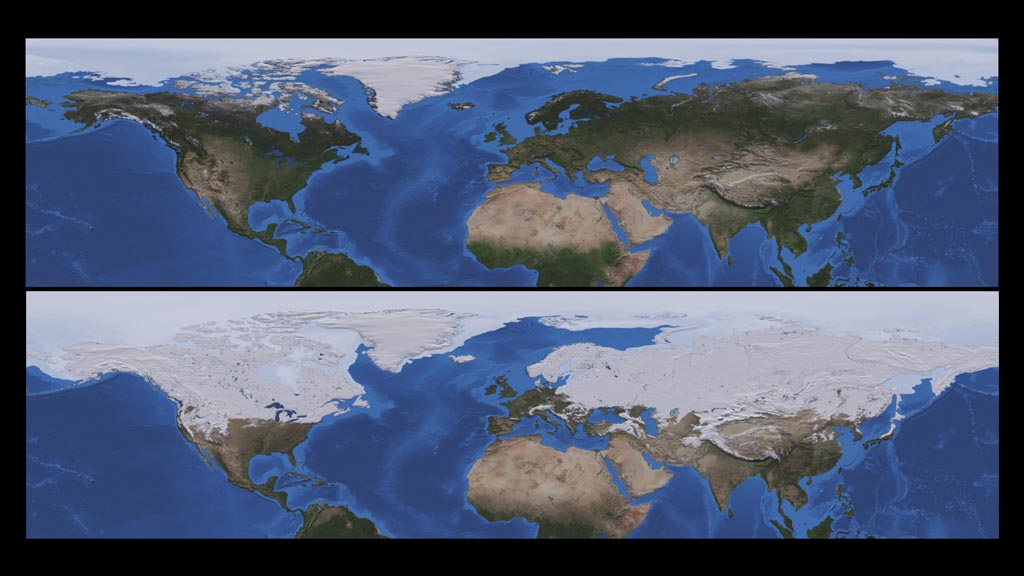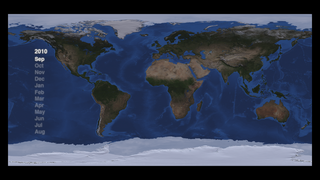Earth
ID: 10850

Seasonal snow cover, the cold mantle that wraps up to 40 percent of the land surface in the Northern Hemisphere during winter, does more than cause rejoicing for those who dream of a White Christmas. Snow plays a key role in the Earth's energy balance, reflecting most of the sunlight that reaches its surface back to space, preventing warming of the ground beneath. Snow also absorbs energy from the atmosphere during spring melt, keeping temperatures moderate. Satellite measurements of snow extent began in the 1960s, and this lengthy record shows a 10 percent decline in annual snow cover since 1966, mainly due to earlier spring melting. Darker, snow-free ground absorbs more solar radiation and emits more warmth to the atmosphere. The snow cover loss is also a concern for those who depend on snowmelt for drinking water. Watch the visualizations below, based on data from NASA's MODIS instrument, to see the dramatic variation in a year of Earth's snow cover. In the Northern Hemisphere, the first flakes fall in mid-September over Siberia and Alaska. By the end of February, snow cover starts its retreat northward. Antarctica is home to most of the Southern Hemisphere's snow, except for some white-capped peaks and seasonal mountain snowfall in South America and Africa.






Let It Snow







Source Material
For More Information
Story Credits
Lead Visualizer/Animator:
Helen-Nicole Kostis (USRA)
Visualizer/Animator:
Cindy Starr (Global Science and Technology, Inc.)
Lead Scientist:
Thorsten Markus (NASA/GSFC)
Lead Writers:
Maria-Jose Vinas Garcia (Telophase)
Patrick Lynch (Wyle Information Systems)
Adam P Voiland (Wyle Information Systems)
Helen-Nicole Kostis (USRA)
Visualizer/Animator:
Cindy Starr (Global Science and Technology, Inc.)
Lead Scientist:
Thorsten Markus (NASA/GSFC)
Lead Writers:
Maria-Jose Vinas Garcia (Telophase)
Patrick Lynch (Wyle Information Systems)
Adam P Voiland (Wyle Information Systems)
Please give credit for this item to:
NASA's Goddard Space Flight Center
Images courtesy of Dorothy Hall (NASA GSFC) and Jeff Miller(NASA GSFC/Wyle Information Systems)
NASA's Goddard Space Flight Center
Images courtesy of Dorothy Hall (NASA GSFC) and Jeff Miller(NASA GSFC/Wyle Information Systems)
Short URL to share this page:
https://svs.gsfc.nasa.gov/10850
Keywords:
SVS >> App
NASA Science >> Earth
https://svs.gsfc.nasa.gov/10850
Keywords:
SVS >> App
NASA Science >> Earth








